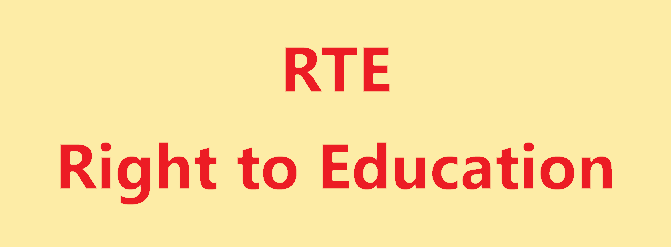What is the full form of RTERTE: Right to EducationRTE stands for Right to Education. It refers to the idea that all children, regardless of caste, creed, gender, or socioeconomic status, are entitled to a high-quality education. It is among the key fundamental rights and a tool for eradicating poverty. It also attempts to establish a society that is socially fair and equal. 
On August 4, 2009, the Indian Parliament passed the Right to Education Act 2009, commonly referred to as the RTE Act 2009. Article 21(A) of the Indian Constitution talks about the need of free and mandatory education for children from 6 to 14 in India. With the execution of this Act on April 1, 2010, India became one of the135 nations that have made education a fundamental right for children. It lays down basic standards for primary schools, forbids the operation of unrecognised institutions, and opposes admissions fees and kid interviews. Through routine surveys, the Right to Education Act maintains an eye on every region and discovers children who should have access to education but do not due to a lack of resources. Importance of RTEAddressing systemic disparities in society through increased social mobility and fostering social justice, the right to education acts as a catalyst for social change. Nurturing each kid's capability for brilliance from an early age which begins now at home and in the community as well as at school, can ensure that every child obtains a superior education. It focuses on fundamental right to education because it enables children to enrol in school and ensures they complete the foundational curriculum. This education offers a foundation for the healthy growth of one's social and personal life. As it guarantees the eradication and diminution of inequality in society, RTE has played a crucial role in fostering a socially fair and egalitarian society. Features of RTEThe provisions of the RTE Act cover children between the ages of six and fourteen. It states that the elementary grade to higher secondary stage or degree in any discipline must be provided free of charge education by the Central and State Governments via their respective public schools, public-private partnership model (PPP), private sector, etc. According to the 2009 Act, RTE has created points of entry and departure with a timeframe for each kid to finish their primary education. If the child has not completed this timeframe, no institution may refuse to admit them, and if the child has been enrolled in school up to that point, no one can be debarred by any cause. The RTE Act's primary goal is to give every Indian citizen fair access to quality education. Benefits of RTEi) Compulsory and free education Each child receives free and required basic schooling from the government up till class 8 at a nearby area school in India. No pupil is required to incur any fees or other costs that might hinder them from continuing and finishing their elementary education. Free education also involves the distribution of textbooks, uniforms, stationery products, and special educational materials for students with disabilities to lessen the financial burden of education expenses. ii) All-round development of children The Right to Education Act of 2009 calls for creating a curriculum that would ensure each child's overall development; child's knowledge, abilities, and capabilities as a person. iii) Creating inclusive spaces for all According to the RTE act, all private schools must set aside 25% of their slots for children from economically and socially disadvantaged groups. The Act's clause promotes social inclusion to create a more equitable society. iv) Improving learning outcomes According to the Right to Education Act, a child not enrolled in school must be accepted to a grade for their age and get specialised instruction to help them catch up to age-appropriate learning standards. ConclusionThe RTE Act is regarded as the ground-breaking law in India designed to offer free and required basic education to children aged 6-14. Under this Act, every kid who belongs to one of the economically deprived groups in society has right to get education. According to this Act, parents can enrol their children in any school of their choice, regardless of class, race, or sex, and cannot be refused access to any school. Whether an institution is public or private, the government offers financial aid to both. A child accepted into a private school can access all government-provided amenities, including a uniform, textbooks, a midday meal, and other things.
Next TopicFull Form
|
 For Videos Join Our Youtube Channel: Join Now
For Videos Join Our Youtube Channel: Join Now
Feedback
- Send your Feedback to [email protected]
Help Others, Please Share










